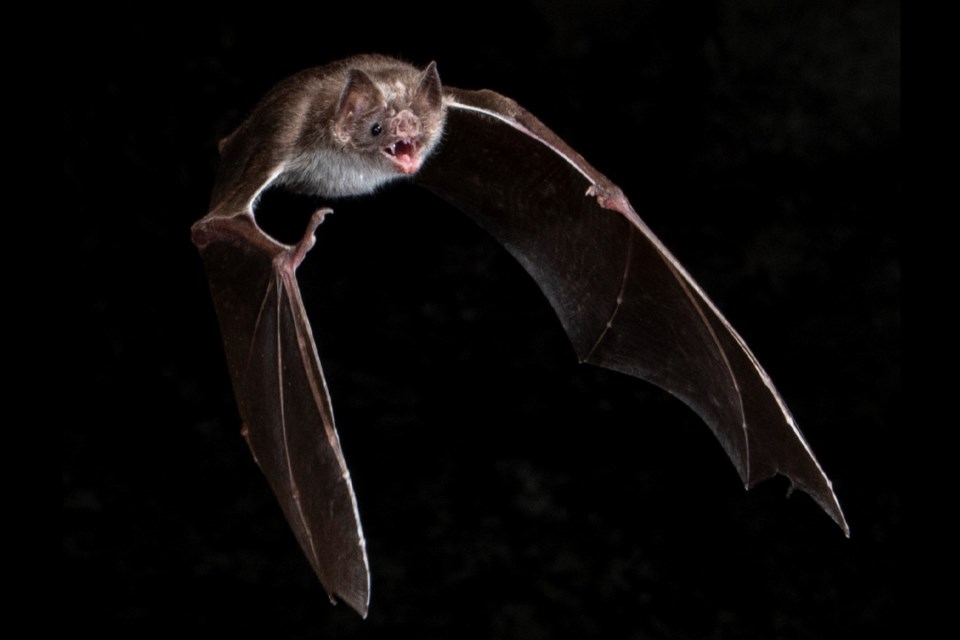SASKATOON — They’re quiet hunters, they’re the inspiration for one of the world’s most popular superheroes and they’re all over Halloween decorations – but how much do we really know about bats?
As Halloween approached, more and more bats were finding their way onto branded candies and spooky TV shows.
But despite their creepy connotations, there are a lot of misconceptions about bats.
Dr. Arinjay Banerjee (PhD) is a researcher with the Vaccine and Infectious Disease Organization (VIDO) at the University of Saskatchewan (USask), as well as an adjunct professor of veterinary microbiology in USask’s Western College of Veterinary Medicine and a co-lead of the USask One Health Signature Area of Research.
He and his PhD student, Dr. Rita Quintela Tizón (DVM), are studying the intricacies of bats. Research Profile and Impact caught up with the pair to debunk some myths about these mysterious creatures of the night.
Count Dracula might have set the stage for vampires turning into bats (and vice versa), but don’t fret – barely any species of bat wants to drink your blood.
Quintela Tizón said there are roughly 1,480 species of bats. Out of those many hundreds, you can count on one hand how many actively drink blood from mammals, and those ones really aren’t interested in coming for human blood anyways.
“We have 1,480 species of bat and only three of them drink blood, but they largely drink from cattle, but also from pigs, horses, and birds,” she said. “They don’t feed from humans. That is a very, very rare occurrence. It doesn’t happen that often.”
While it’s probably obvious that С����Ƶ bitten by a bat is scientifically unlikely to turn you into a bat, bat bites can still be dangerous.
As Banerjee puts it, most bat teeth are so tiny and sharp you might never notice actually С����Ƶ bitten by one, which is why you should phone an expert if you end up finding a bat hanging around.
Bats can also carry rabies, one of the more well-known diseases that can jump from animals to humans with dangerous consequences.
“What could potentially happen is bats in Canada and around the world can carry rabies, and once the symptoms for rabies kick in post-exposure in a human, it is 100 per cent fatal. But rabies is a vaccine-preventable disease,” Banerjee said. “You certainly won’t turn into a vampire. But rabies is a lot worse, I think.”
Most bats are nocturnal – meaning they take care of business like flying and hunting for food at night. But that’s not true of all bat species.
Quintela Tizón said some fruit bats are diurnal creatures, which means they’re out and about during the day. And unlike the very limited number of vampire bat species in the world, there are 197 species of fruit bats.
The phrase “blind as a bat” is also a misnomer, as bats aren’t blind. Although many bat species use echolocation to help them navigate in the dark and to find food, most bats can use their eyes just fine.
“We have nocturnal insectivorous bats in Canada. They use sounds to know where insects are. But they can see,” Quintela Tizón said.
Bat immune systems have some that make them less horrifying and more helpful for researchers.
Some bat cells have the ability to adapt and produce a natural antiviral response to different viral infections in a way that other creatures – including humans – cannot.
“Bats have this amazing capacity to tolerate infections with so many viruses,” Banerjee said. “They can coexist with these viruses that can cause severe disease in humans. So, our goal is to understand how bats can respond and tolerate these infections, and then develop novel therapies for humans.”
Not only are bats not cruel and terrifying spectres of Halloween, but they actually take close care of each other.
Quintela Tizón said there have been many documented cases of bats taking care of young bats in a colony, forming what amounts to “bat nurseries” to care for them.
In addition, vampire bats – those few scary species that drink blood – have been shown to share blood with other bats by regurgitating it for them, either to feed bats who otherwise can’t feed themselves, or as gifts.
“Bats are very empathic,” Quintela Tizón said. “Vampire bats will feed each other, form nurseries, groom each other ... There is way more to these animals than people may think.”
6. There are very few, if any, reasons to be afraid of bats.
Like many wild animals, it’s very likely bats are more afraid of you than you are of them.
Not only will bats leave you alone unless disturbed, Banerjee said bats provide us with great advantages outside of a lab environment, too.
They might be a symbol of Halloween, but bats are more than a sign of the scary season.
“From an ecological standpoint, bats are extremely, extremely important,” he said. “Bats do a lot of pest control for farmers. They can eat equivalent to their body weight in insects every night and that’s extremely important to protect our crops. And Saskatchewan is a heavy crop producing province.”
— Submitted by USask Media Relations




